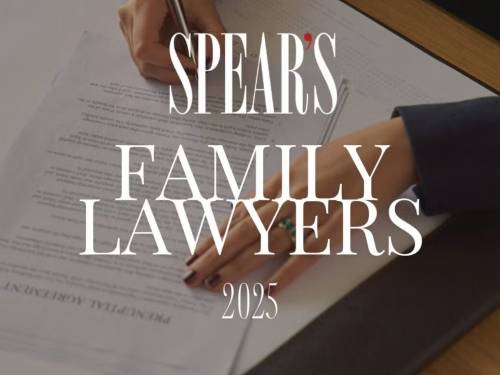On 2 July 2025, the Supreme Court handed down its judgment in the case of Standish v Standish [2025] UKSC 26 (on appeal from [2024] EWCA Civ 567). The case has sought to determine one key issue:
when does non-matrimonial property, that is typically pre-marital property or property originating from a lifetime gift or inheritance, become matrimonial property in the context of financial remedy proceedings, and how should the sharing principle be applied to such property?

This article is authored by Jon Keeley, Associate in our Family Law team at Laurus, with expert insight from Jacqueline Fitzgerald, Partner in the team.
As part of our commitment to our clients’ legal wellbeing, we highlight this important Supreme Court judgment in Standish v Standish [2025] UKSC 26. It delivers crucial clarification on when non-matrimonial property becomes matrimonial in divorce proceedings, an important determination with significant implications for those seeking to protect family wealth and plan for the future.
Background
The case concerns a married couple, Mr Standish and Mrs Standish who were married on 19 December 2005. They had two children together. The marriage broke down in early 2020, with the divorce petition being issued on 1 April 2020.
At first instance in the High Court, Mr Justice Moore described the husband as “an immensely able and intelligent man”. Over a 35-year career in the financial services industry, the husband accumulated considerable wealth. On the husband’s case, by 2004, his total assets were approximately £57 million.
By contrast, the wife brought more modest resources into the relationship, including a property in Melbourne and some savings. She later inherited approximately AUD $626,000.
The husband was born in the UK but moved to Australia in 1976. His career necessitated him living elsewhere for a time, but when he retired in 2007 he returned with the family to Australia. In 2010 the parties came to live in England.
In 2017, acting on tax advice, the husband transferred investments then worth £77.8 million (by trial, valued at £80 million) into the wife’s sole name, along with shares in an Australian farming business (‘the 2017 assets’). The aim was to mitigate his inheritance tax liability ahead of the husband becoming deemed UK-domiciled. The wife, who retained her non-domiciled status, was advised to place the assets into a Jersey trust for the benefit of the couple’s children. That trust was never created, and the assets remained in her name when the marriage broke down in early 2020.
At first instance, Mr Justice Moor concluded that although the 2017 assets originated as non-matrimonial property, their transfer into the wife’s name had the effect of “matrimonialising” them. He treated the full £80 million as matrimonial and applied the sharing principle to a total matrimonial pot of £113 million, awarding 60% to the husband and 40% to the wife.
The Court of Appeal disagreed. Lord Justice Moylan found that the transfer did not itself convert the assets into matrimonial property. Instead, he conducted a “sifting” exercise, determining that only 25% of the 2017 assets represented marital earnings and were therefore matrimonial, while 75% remained non-matrimonial. Accordingly, 25% was available for sharing, such that the wife’s share amounted to 12.5% rather than 40%. The wife’s award was recalculated at £25 million. She was granted permission to appeal to the Supreme Court.
Legal framework
Under section 25 of the Matrimonial Causes Act 1973, the court must consider a range of factors in determining financial orders, including the welfare of minor children.
The leading cases of White v White and Miller; McFarlane introduced the principle that fairness is the touchstone of financial remedy awards. ‘Fairness’ is a subjective concept, and Lord Nicholls noted in White v White [2001] 1 AC 596: “sometimes, different minds can reach different conclusions on what fairness requires. Then fairness, like beauty, lies in the eye of the beholder.”
In the conjoined cases of Miller v Miller and McFarlane v McFarlane [2006] UKHL 24; [2006] 2 AC 618 (“Miller/McFarlane”), Lord Nicholls determined that: “each party to a marriage is entitled to a fair share of the available property.”
In Standish, the issue was whether the 2017 assets, although originally non-matrimonial, had become matrimonial by virtue of their transfer and subsequent treatment and thus subject to sharing.

The Supreme Court’s Judgment
The Supreme Court unanimously dismissed the wife’s appeal, upholding the Court of Appeal’s approach and clarifying the law in five key respects:
- There is a conceptual distinction between matrimonial and non-matrimonial property
There is a clear distinction between matrimonial and non-matrimonial property, based primarily on the source of the assets and not legal title. Assets acquired before the marital partnership or by inheritance/gift are usually non-matrimonial. - Non-matrimonial property should not be subject to the ‘sharing principle’
This applies to matrimonial property, but not to non-matrimonial property unless required to meet needs, which was not an issue in this case. - The sharing of matrimonial property should usually be on an equal basis.
Although there can be departures from this rule, equal sharing is the starting point. - Matrimonialisation
Non-matrimonial property may become matrimonial over time through a process of “matrimonialisation”. The Supreme Court determined that it is important “to consider how the parties have been dealing with the asset and whether this shows that, over time, they have been treating the asset as shared between them.” - The transfer of an asset from one spouse to the other spouse does not inherently show that an asset is treated as ‘shared between them’.
A transfer made purely to achieve tax savings, even where the legal title changes, does not in itself show the asset was treated as shared. Compelling evidence is required to override the original classification.
Application to the Facts
The Supreme Court found no evidence that the 2017 assets had ever been treated as shared between the spouses. The transfer was part of a tax-planning exercise. As inheritance tax does not apply on disposals between spouses, it is clear that the only reason for the transfer of assets was to mitigate inheritance tax for the benefit of the children, not the wife.
The expected trust for the children was never set up, but the court considered that fact immaterial to the intention behind the transfer.
Moylan LJ’s apportionment, that only 25% of the 2017 assets were matrimonial, was upheld. The remainder, being pre-marital in origin and not matrimonialised, fell outside the scope of the sharing principle. Accordingly, the Supreme Court upheld the wife’s £25 million award.
Analysis
Mr. Standish very sensibly took tax advice in 2017 ahead of him being deemed domiciled in England for the purposes of Inheritance Tax. However, when one is making significant changes to the ownership of assets amongst family members, the advice sought should be on a holistic approach. It is not uncommon for wealthy individuals to want to distribute their wealth during their lifetime, not only as part of sensible tax planning, but also to give practical assistance to children and other close relatives. Business owners approaching retirement or on a sale of the business often choose to pass assets on to the next generation. In addition to tax advice, they should also seek specialist family law advice on pre-nuptial and post-nuptial agreements, so that the assets being gifted can be protected from claims on divorce.











